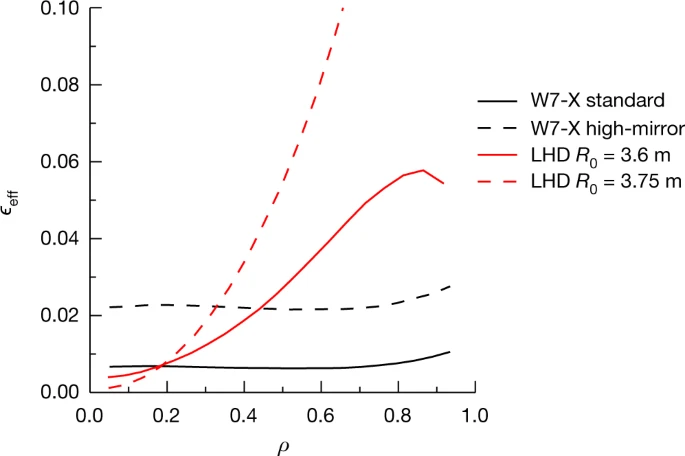Science Alert September 2, 2021
An international team of researchers (Germany, Belgium, Spain, USA – Princeton Plasma Physics Laboratory, MIT, University of Wisconsin, Oak Ridge National Laboratory, Auburn University, University of Maryland, Los alamos National Laboratory, Hungary, Australia, the Netherlands, Denmark, Italy, Portugal, France, Russia, Poland, Japan, Austria, Ukraine, Finland, UK) sought to shape the magnets in W7-X to try and reduce the effects of neoclassical transport. Measurements, taken using an instrument called an X-ray imaging crystal spectrometer (XICS), have shown very high temperatures inside the reactor. These are supported by charge exchange recombination spectroscopy (CXRS) measurements. With both data sets in agreement, it seems the stellarator was able to achieve temperatures of nearly 30 million Kelvin. The finding is a significant step towards a practical fusion reactor…read more. Open Access TECHNICAL ARTICLE

Radial profiles of the effective helical ripple. Credit: Nature volume 596, pages221–226 (2021)